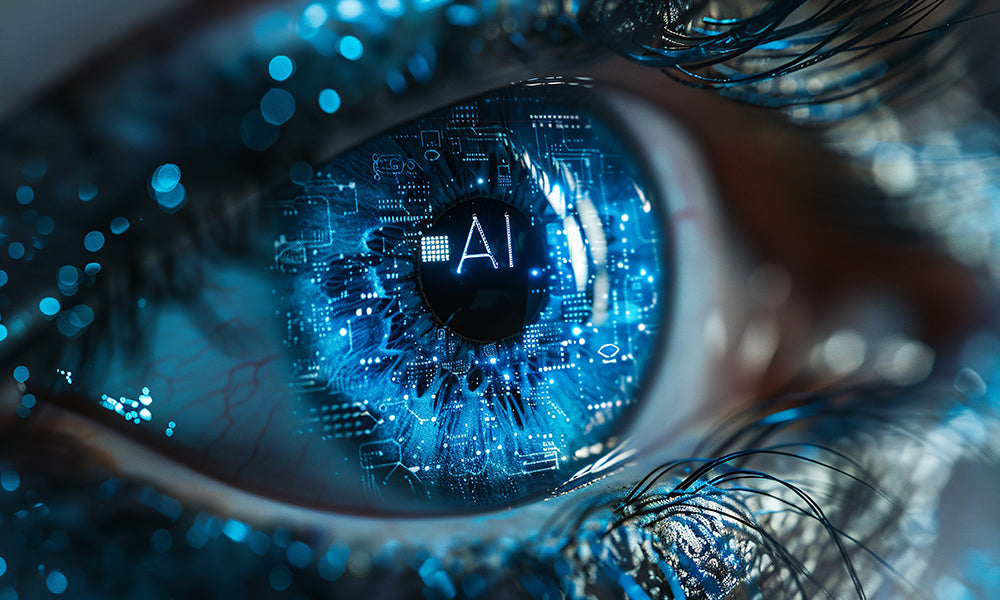How AI Combats Illegal Content and Acts as a Copyright Guardian

In today’s digital world, where videos, music, and images flood the internet every second, protecting creative work and stopping harmful content has become a massive challenge. Enter artificial intelligence (AI) —a powerful ally in the fight against copyright infringement and illegal material. From copyright detector video systems on YouTube to ai copyright detector tools for art and text, AI is reshaping how we safeguard creativity and safety online. Let’s explore how this technology works and why it matters.
What Is a Copyright Detector?
A copyright detector is a tool powered by AI that scans digital content to identify unauthorized use of protected material. Whether it’s a song, video, image, or essay, these systems compare uploaded files to vast databases of registered works. If a match is found, the tool alerts creators or platforms to take action. For example, when someone uploads a copyright detector video to YouTube , the platform’s AI checks the audio and visuals against its library of copyrighted content. If it detects a match—like a popular song or movie clip—it may mute the audio, block the video, or notify the rights holder.
AI’s speed and precision make it ideal for this task. Unlike humans, who would take years to review millions of files manually, AI systems can analyze content in seconds. This efficiency is critical for platforms like YouTube , where over 500 hours of video are uploaded every minute.
How AI Protects Music and Video Content
One of AI’s most visible roles is in guarding music and video content. Platforms like YouTube rely on copyright ai detector systems to enforce rules. When a creator uploads a video, the AI scans the audio for matches to copyrighted songs or recordings. It does this by breaking the audio into “fingerprints”—unique digital signatures—and comparing them to a database of licensed tracks.
For instance, if a user posts a dance video using a chart-topping song without permission, the system flags it. The rights holder then decides whether to monetize the video, mute the audio, or remove it entirely. This process, known as Content ID, has helped artists and labels earn billions in royalties while preventing unauthorized use.
Similarly, copyright detector video tools monitor streaming services for pirated movies or TV shows. These systems use visual recognition to spot exact copies or edited versions of protected works. In 2025, the U.S. Copyright Office reported registering over 1,000 AI-enhanced works, underscoring the growing need for such protections.
Guarding Images and Text with AI
AI doesn’t stop at video and music . Tools like Filestack’s ai copyright detector analyze images to detect stolen artwork, logos, or photographs. By examining pixel patterns and metadata, these systems identify whether an image is already protected by copyright. This helps photographers and designers protect their work from theft or misuse.
Text-based content benefits from AI too. Plagiarism checkers like Turnitin use natural language processing (NLP) to compare essays, articles, and books against billions of sources. If a student copies a paragraph from a website, the tool highlights the match and cites the original source. This promotes academic integrity and teaches responsible use of information.
Real-World Examples: AI in Action
AI’s impact is evident in cases like the 2024 Raw Media lawsuit, where news outlets accused OpenAI of scraping thousands of articles without permission. While this case highlighted gaps in copyright enforcement, it also spurred innovation. Companies now use copyright detection tools to monitor AI training data, ensuring it doesn’t include unlicensed material.
Another example is YouTube ’s Content ID system, which has prevented millions of copyright violations since its launch. By automating detection, the platform empowers creators to control how their work is used while fostering a fair ecosystem for sharing.
Tools and Technologies Behind the Scenes
Modern copyright detectors rely on advanced techniques:
- Content Fingerprinting : Creates unique identifiers for audio, video, or images to spot matches even if files are edited.
- Reverse Image Search : Finds duplicates or modified versions of protected images by analyzing visual elements.
- Machine Learning : Trains AI models on vast datasets of copyrighted works, improving accuracy over time.
These tools work together to form a robust defense against infringement. For instance, an ai copyright detector might use fingerprinting to identify a song snippet in a video and reverse search to trace an image’s origin—all within seconds.
Challenges and Limitations
Despite its power, AI isn’t perfect. False positives occur when systems flag legitimate uses, like a cat video mistakenly linked to a copyrighted song. Additionally, bad actors may bypass detectors by slightly altering content—such as adding noise to audio or distorting images.
Legal gray areas also persist. In 2024, debates intensified over whether AI-generated works qualify for copyright protection. While the U.S. Copyright Office now accepts AI-assisted creations, disputes over ownership and originality remain unresolved.
The Future of AI in Copyright Detection
As AI evolves, so will its ability to combat illegal content. Researchers are developing systems that detect deepfakes, synthetic media designed to deceive, and track AI-generated text to prevent plagiarism. Future copyright detectors may even predict infringement risks before content is uploaded, using real-time analysis to stop violations proactively.
Platforms like YouTube and TikTok are also investing in transparency. Some now let creators appeal false claims or provide clearer guidelines for fair use. These steps aim to balance protection with freedom of expression.
Why This Matters for Everyone
AI-powered copyright detection isn’t just about legal compliance—it’s about respecting creativity. Whether you’re a musician, student, or social media user, these tools ensure credit goes where it’s due. By automating enforcement, AI lets creators focus on making art, not chasing thieves.
Next time you upload a video , share a photo, or write a paper, remember: behind the scenes, a silent guardian—a copyright ai detector —is working to keep the digital world fair and safe.














